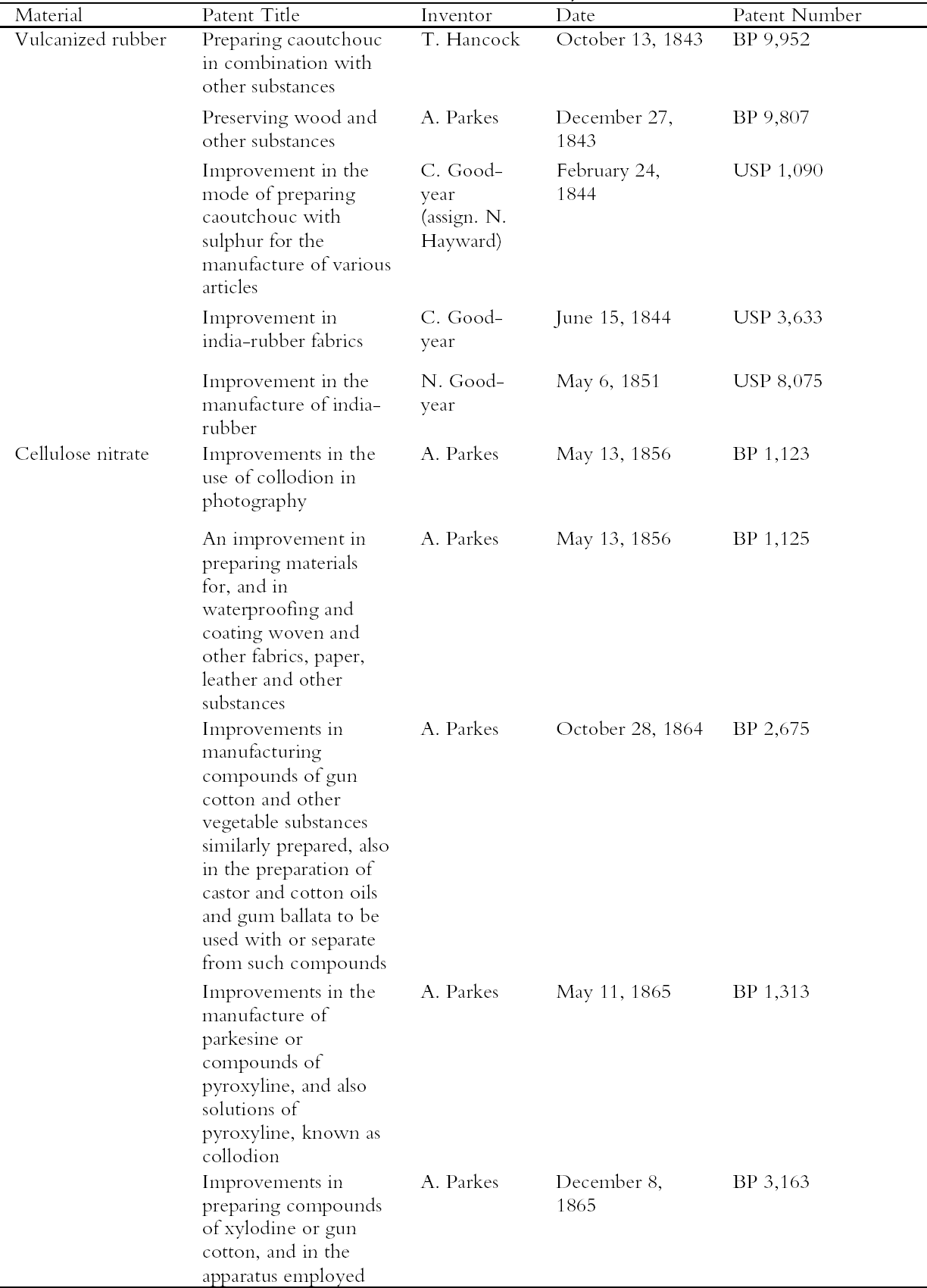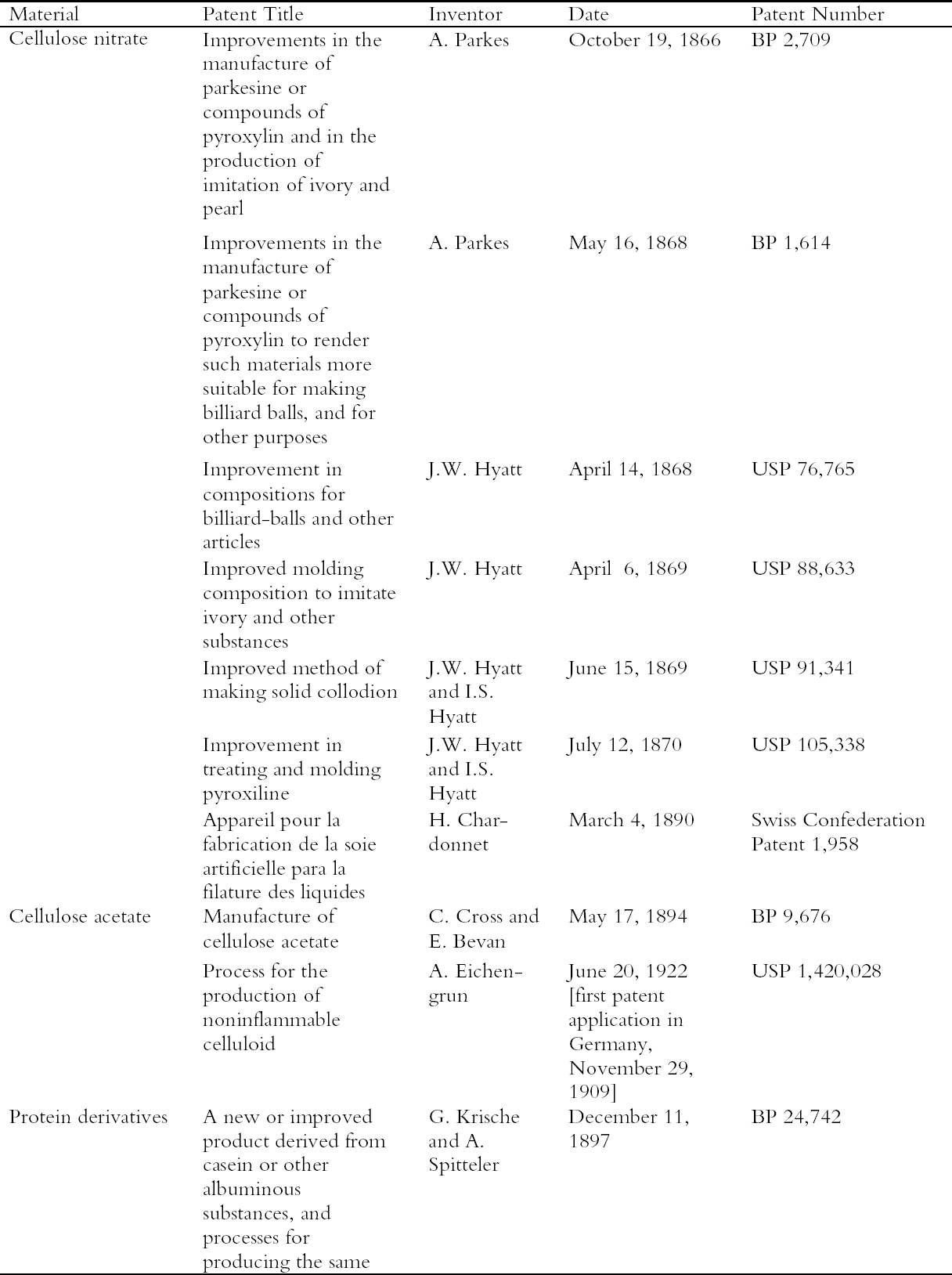SHORT COMMUNICATION ORIGINAL PATENTS AS AN AID TO THE STUDY OF THE HISTORY AND COMPOSITION OF SEMISYNTHETIC PLASTICSSILVIA GARC�A FERN�NDEZ-VILLA, & MARGARITA SAN ANDR�S MOYA
2 PRINCIPAL PATENTS RELATED TO SEMISYNTHETIC PLASTICSThe development of the semisynthetic polymers first began in the second half of the 19th century. Research was prompted by the need to find substitutes for such materials as tortoiseshell, ivory, and ebony, which were very expensive and impossible to produce on an industrial scale. By 1858, approximately 8% of British patents mentioned the words “molding composition” or “plastic” and related to Since patents do not always provide enough information on the material, research into other sources is needed. In the case of vulcanized rubber, Morgan (1991) is a good source; for cellulose nitrate, Friedel (1983), Selwitz (1988), and Reilly (1991); and for cellulose acetate and protein derivatives Kaufman (1963). Works relating to exhibitions are also useful: for vulcanized rubber, on the Great Exhibition of 1851 (Commission Fran�aise sur l'Industrie des Nations 1858) and on the Great Exhibition of 1862 (Chevalier 1862). In the case of cellulose nitrate, the works of Gerhardt (1854), Schmidt (1870), Jamin (1887), Worden (1911), and Baekeland (1914) can be recommended. Table 1 lists some of the most important patents related to semisynthetic plastics. It has to be pointed out, however, that in the case of cellulose nitrate, euphoria over the possibilities this material offered produced a multitude of patents concerned with each and every possible use of this plastic (e.g., Ray 1865; Pierson 1867).
|

